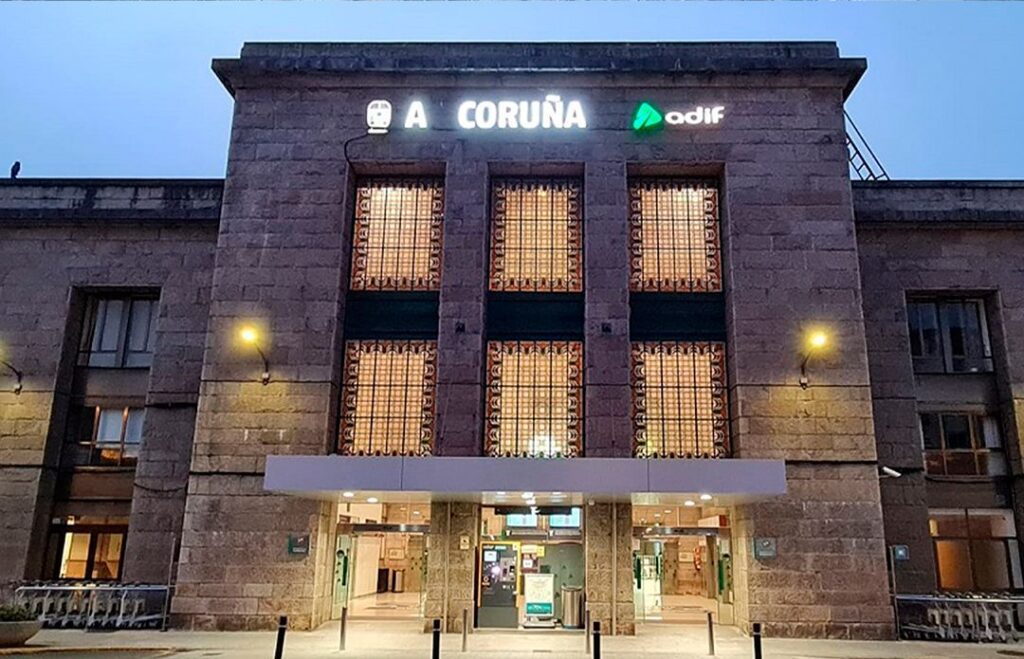Work at the terminal continues to progress with a new phase that includes the construction of a temporary station, which will involve an investment of around 4.5 million euros.
Adif is advancing in the renovation and modernization of the A Coruña station with the construction of a temporary station that will entail an investment of about 4.5 million euros. This new work, which was not included in the initial project but has become necessary to guarantee the station’s capacity, makes use of advanced Building Information Modeling (BIM) technology.
The station project, with a total investment of over 70 million euros, aims to respond to the increase in train and passenger traffic associated with the arrival of high-speed rail in Galicia. During this transition to high-speed rail, the temporary station will be used while the historic tent becomes a large lobby with a commercial area. Once the tracks are removed from the interior, a new boarding area will be set up and the platforms will be rearranged under a new cover.
Furthermore, improvements will be promoted in the access plaza and its integration into the city, with a focus on its historic building, dating back to 1935 and being the only example of neoromanesque style railway architecture in Spain.
The renovation is part of the Agreement for the Development of the Intermodality Transport Passenger Area in the city, signed by the Ministry of Transport and Sustainable Mobility, the Xunta de Galicia, and the City Council of A Coruña, to promote sustainable and multimodal mobility. It also includes the construction of a bus station next to the railway station.
This action will be financed by the European Union through the Recovery, Transformation, and Resilience Plan, funded by the European Union – NextGenerationEU. Additionally, it contributes to the achievement of Sustainable Development Goals (SDGs) 9, promoting reliable, sustainable, and quality infrastructure, and 11, including access to safe, accessible, and sustainable transportation systems.
The renovation, for which both Adif and the multinational company Ferrovial, the project contractor, have opted for the use of the BIM methodology. A technology that improves efficiency in the planning, design, and execution of projects, reducing costs and delivery times.
The benefits, as evidenced by Tomaso Cardia, BIM Manager at Ferrovial, in the interview published in the AbiertoXObras section, which the specialized consulting firm – www.espaciobim.com – publishes every month. “Having a single point of information, constantly updated by and for everyone, allows you to always have all the necessary information at hand: meetings with suppliers are held in the federated model, as well as all decision-making meetings, not to mention site meetings where it is necessary to explain technical solutions to the staff clearly and updated.”
As corroborated by Borja Sánchez Ortega, Director of Projects and Director of the BIM Management master’s degree, the International BIM Manager Master’s degree (+ VR) at the aforementioned consulting firm, “BIM will allow Adif to centralize all the information of the A Coruña station (geometric, documentary, etc.) in a digital model developed by all the agents involved.”
In a context where companies like Adif or Ferrovial are committed to sustainability and innovation in all their projects, BIM has become a key tool for construction professionals.
Referrer: MiMub in Spanish
